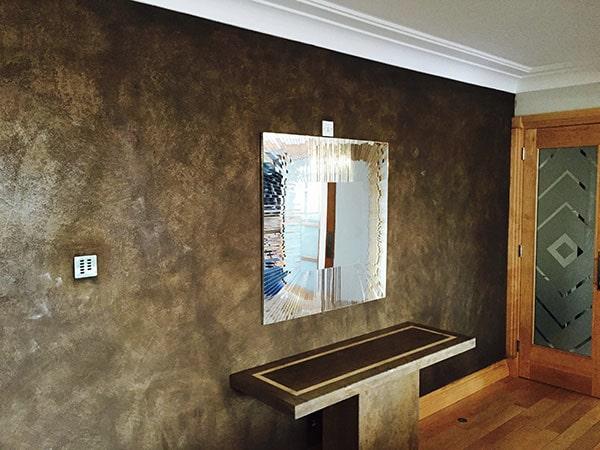Venetian plaster, also known as Venetian finish lime plaster or polished plaster, is a decorative wall finish made by mixing marble dust and lime. It is known for its smooth, silky texture and its ability to be polished to a high sheen, resembling the look of natural marble. This technique has been used for centuries, offering a luxurious and durable finish that adds depth and elegance to any space. Key Characteristics and Benefits: Marble-like Appearance: The combination of marble dust and lime, along with the layering and burnishing techniques, creates a finish that mimics the look and feel of polished marble. Smooth, Textured Finish: Venetian plaster is applied in thin layers, creating a visually textured surface that adds depth and dimension. Durability: It is a durable and long-lasting finish, resistant to cracking and fading, making it suitable for high-traffic areas. Breathability: Unlike some other finishes, Venetian plaster is breathable, allowing moisture to escape and potentially preventing mold and mildew growth. Eco-friendly: It is often made with natural materials like lime and marble dust, making it a more eco-friendly option compared to some synthetic finishes. Versatility: Venetian plaster can be tinted or colored to achieve a wide range of desired shades and can be used to create various decorative effects, including marble-like patterns. Long-lasting: With proper care, Venetian plaster can last for many years, even decades, maintaining its beauty and integrity. Application and Techniques: Layering: Venetian plaster is applied in multiple thin layers using a trowel or spatula. Burnishing: The layers are burnished to create a smooth, polished surface. Tinting: Colorants can be added to the plaster to achieve specific colors or to mimic the look of different types of marble. Waxing: A protective wax coating can be applied to enhance the finish's durability and water resistance. Historical Context: Venetian plaster techniques have been used for centuries, dating back to ancient Rome and the Italian Renaissance. The craft was revived during the Renaissance, particularly in Venice, where it was used to lighten and waterproof buildings. Venetian plaster's resurgence in modern times is due to its luxurious aesthetic and the desire for unique and durable wall finishes.
Send Message
